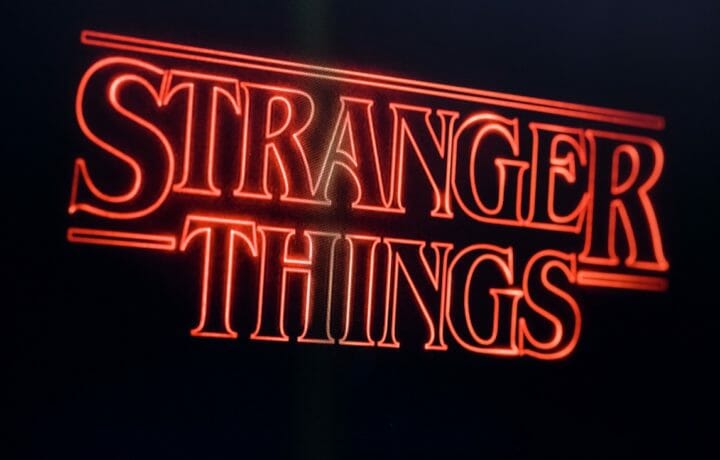If you’re a patriotic American like me, you woke up at 7:30 on July 4th, grabbed some snacks, then sat down with friends to watch the entire third season of Stranger Things on the day it premiered. And if you’re like me, you’ve got a lot of questions. What really happened to Hopper? Will the Upside Down really stay closed? What’s Billy’s secret to a perfectly-coiffed mullet? But after watching these latest episodes, there’s no question about one thing: the Cold War was no joke.
If you’re not familiar with the Netflix series, Stranger Things takes place in the early 1980’s in the fictional town of Hawkins, IN. With its middle and high school-aged cast, phones that were still attached to walls, and Ghostbusters Halloween costumes, it’s an excellent time warp back to 1980’s American suburbia. Apart from jarring confrontations with supernatural beasts from parallel dimensions, it’s a charming nostalgia trip.
Though the whole series is set during the Cold War, Season 3 is the first to really tackle and incorporate the Cold War, the drastic difference between Communist and Capitalist ideologies, and our decades-long animosity with the Soviet Union. Here are four things the show gets right that we would do well to remember.
(For you slackers who didn’t watch all eight episodes in one fell swoop, beware of some minor spoilers ahead.)
1. Ideas very tangibly affect our quality of life
It’s no coincidence that the show’s third season revolves around Starcourt Mall, a new 80’s-tastic shopping mall in Hawkins, IN. Not only does it resonate with all of us who spent our middle school years as mallrats, but it’s a perfect example of Capitalism on display. While those in Soviet states were struggling for consumer goods of any kind, Americans were cruising malls around the nation, scooping up Member’s Only jackets and buying jumpsuits at The Gap. Malls were the crowning achievement of America’s decades of prosperity. What society would build such a place if it were not optimistic about its future?
2. Soviet ideology was the enemy of the individual
When two characters suspect that Soviet operatives are cruising around Starcourt Mall, they hide out with binoculars trying to spot Soviet spies. When one character asks what a Russian looks like, his friend tells him to look for someone who is “tall, blond, not smiling.”
Sure, this quip could be chalked up to humor, jingoism or paranoia – but not wholly. In the first episode, we see Soviet generals are trying to weaponize an evil parallel dimension. When half a dozen Soviet scientists are burned to a crisp in a failed experiment, the general simply steps over their charred bodies with no regard, then threatens the life of the head scientist if he fails again. The goal of the USSR was not to promote a society of prosperity and individual freedom; it was to maintain and grow its own power. All else was secondary. And while this incident is obviously fictional, one need look no further than the nuclear disasters at Mayak and Chernobyl to confirm that the attitude was frightfully real.
3. The soviets wanted to turn our own ideals against us
One thing that has made the Soviet Union such a brilliant foil for American film and TV is how shrewdly it understood us. There is a Bond Villain-esque quality about the way that the Soviets understood America’s strengths and weaknesses – and knew just how to exploit them. When the Soviets invade Hawkins in what one character calls, “A full-on Red Dawn situation,” the location of the invasion is pregnant with symbolism. What better way for the Soviets to overtake suburban Indiana than through building and secretly operating the Starcourt Mall? This symbol of American freedom and prosperity is actually just a Soviet mousetrap. As distracted Americans feast on their U.S.S. Butterscotch Sundaes at Scoops Ahoy, the Soviets are tunneling under the mall, preparing to release otherworldly monsters into the food court.
And again, lest you think this is just fiction, remember the 2016 election. When trolls created fake social media content to stir up dissent, they were turning our own values against us.
4. America Was the Envy of the World
Though the show’s events take place right around July 4th, there’s more to the show’s premiere date than just that. The Fourth of July is the perfect backdrop to showcase the contrast between the ideologies of the U.S. and the Soviets. At a Fourth of July carnival, Alexei, the turncoat Russian scientist, grins like a child when he wins a giant, stuffed Woody Woodpecker. He’s obsessed with American cartoons and Cherry Slurpees. When he’s taken hostage by the Americans, he doesn’t try to escape because he knows he’ll be safer with them than his own countrymen. In short, Alexei wants the life Americans have.
Though the iron grip of Communism controlled the governments of millions, it could not control their hearts and minds. People yearn to be valued as individuals, to have the freedom to go as far as their talent and effort will take them. Those values are the basis of American society – both in fictional Hawkins, IN and in real life today. The show offers an excellent reminder of just how fortunate we are to be Americans.




